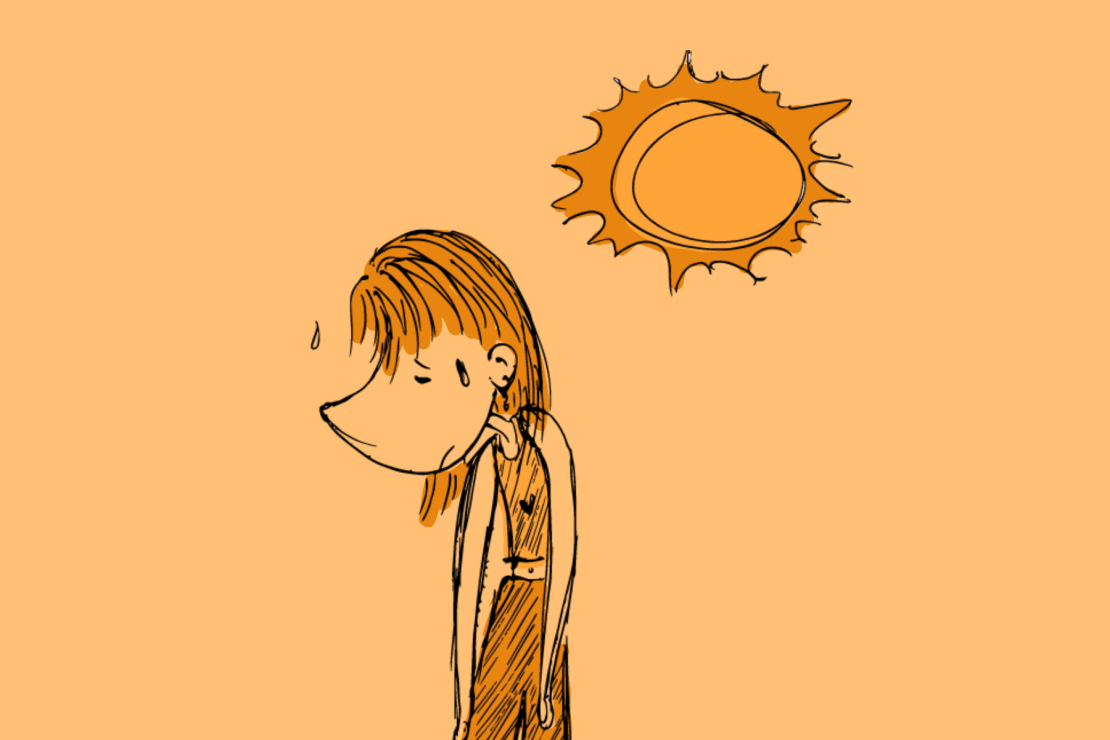Plans for climate resilience are in early stages, but the heat won’t wait

Illustration by Sage Blackwell.
Victoria’s hottest day on record was June 28, 2021, at 37.8 degrees celsius. This record was reached during the 2021 heat wave, which affected much of western North America, and was also responsible for the Lytton wildfire.
While Victoria’s summer temperatures have not quite reached that record in years since, global temperatures have continued to climb, and extreme heat events like the 2021 heat wave are becoming more common.
According to a statement from David Adams, associate director of Energy Programs in Facilities Management, UVic’s newest residence buildings (Čeqʷəŋín ʔéʔləŋ / Cheko’nien House and Sŋéqə ʔéʔləŋ / Sngequ House), which were finished in 2022 and 2023, were deliberately designed to stay cool in “severe summer weather conditions.”
Adams said these blueprints rely on climate modeling data from UVic’s own Pacific Climate Impacts Consortium, and their heat mitigation capabilities were designed based on projected summer weather in 2050.
“New buildings are designed to meet thermal comfort requirements, including [the] consideration of projected future climate conditions,” reads Adams statement. These include buildings such as the Centre for Athletics, Recreation, and Special Abilities (CARSA), Sngequ and Cheko’nien, and the National Centre for Indigenous Law, which is still under construction.
Older structures on campus, Adams said, are more difficult to manage in terms of extreme summer weather conditions, because any buildings constructed prior to 2010 were not designed with cooling systems.
Adams told the Martlet that updating these buildings to be more resilient will “require significant capital investment.”
One Reddit user wrote, on the UVic subreddit, “I’ve been having a hard time sleeping in my dorm because of the extreme heat. Any tips or tricks on how you guys cool your rooms down?”
Recommendations from commenters included “set up a fan at the base of your bed pointing at your body,” and “mist yourself.”
UVic does not currently have a campus-wide heating and cooling strategy.
Adams said the university plans to develop one which addresses concerns about extreme heat and cold temperatures.
“This strategy will assess buildings and spaces most vulnerable to disruption due to overheating, and will prioritize investments in infrastructure retrofits, including HVAC systems and building decarbonization plans to mitigate temperature extremes,” he said.
As part of this strategy, he said, UVic is looking into technology such as heat pumps which could provide heating and cooling needs of buildings, and would also enable UVic to reduce emissions by shifting their reliance off of fossil fuel-based heating systems.
The first phase of UVic’s climate resilience plan — which aims to reduce campus greenhouse gas emissions — is expected in 2025, said Adams.
Once this initial phase is completed, he said, the next phase will focus on campus cooling, and resilience to increasingly extreme summer weather. Adams told the Martlet that UVic does not currently have a date set for the completion of this phase of the plan.
As students and faculty anticipate a reliable, centralized strategy for dealing with extreme heat, the temperatures of many buildings on campus come spring, summer, and fall will continue to climb.








